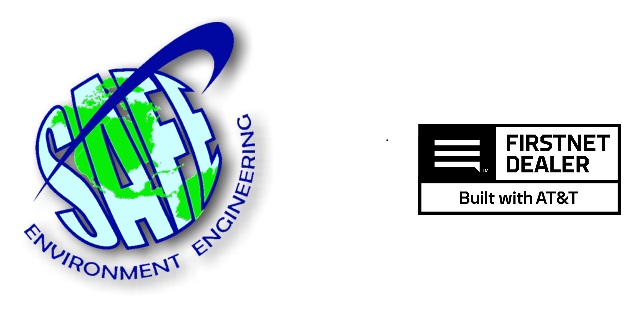Background
In 1993, Safe Environment Engineering (SEE) began as a company offering solutions for monitoring personnel in confined spaces. Locations included aircraft manufacturing, ship building and maintenance, as well as petroleum and chemical plants. When workers enter a confined space, OSHA law dictates that someone must check on their well-being at regular intervals. SEE’s Portable Safety Monitor (PSM) was a small device that a worker would take into the confined space with them that would beep, vibrate, and flash periodically asking “Are you OK?” A worker would have to physically push a button to respond. The system also supported voice communications and the ability to connect an instrument for wireless environmental monitoring. All worker and environmental data was sent to safety and security personnel remotely located in a safe location.
These early Life•line telemetry systems used a 450MHz radio channel to penetrate difficult and challenging radio environments, such as inside aircraft wings or the ballast tanks of submarines. These wireless systems were also designed specifically for the building or environment they were serving. Some of these locations were quite complex, such as the Boeing Company in Everett, Washington, where the system needed to provide coverage into all wing and fuselage locations in a 472,370,319 cubic foot building.
A trade publication caught the eye of the Los Angeles City Fire Department (LAFD) on how SEE was able to provide wireless environmental data from workers in potentially hazardous environments to personnel in a safe location who could monitor their well-being. LAFD wanted to apply this tool to Hazmat teams in which “Hot Zone” environmental readings could be relayed to Technical Reference members in a remote safe location to “watch the entry team’s back” and aid in situational support.
The challenge, however, was how to take a fixed facility designed wireless monitoring system and apply it to the dynamics of Public Safety. A system that was specifically designed and tuned to work reliably the same way in a production environment now needed to work “everywhere” and under all conditions. This Public Safety system also needed to integrate with many different environmental monitoring instruments that all operated differently and were not regulated by any standards. Additionally, this system needed to scale to meet the dynamics of the incident and integrate a real-time interoperable information sharing.
With the assistance of the United States interagency Technical Support Working Group (TSWG) and Los Angeles Public Safety organizations, the system matured to address the top 8 most critical needs of an integrated tracking, health monitoring, and alerting system. Los Angeles and SEE were recognized for this effort when they were selected by the Department of Homeland Security (DHS) to pilot the Integrated Chemical, Biological, Radiological, Nuclear, and Explosives (ICBRNE) program that monitors live, and reports, displays, and alerts appropriate officials in the event of detection.
In collaboration with the California Emergency Management Agency, the 9th Civil Support Team, and the Los Angeles Chapter of the Consortium of Technical Responders, SEE expanded system capabilities to include the Automated Capabilities and Equipment (ACE) CBRNE asset management component.
In 2014, SEE was contracted to support the DHS Domestic Nuclear Detection Office (DNDO) Los Angeles – Long Beach Regional Secure the Cities (STC) program to expand components of the ACE tool. ACE was further integrated to include specific tracking capabilities, radiological and nuclear detection response and prevention policies as well as detection operations.
